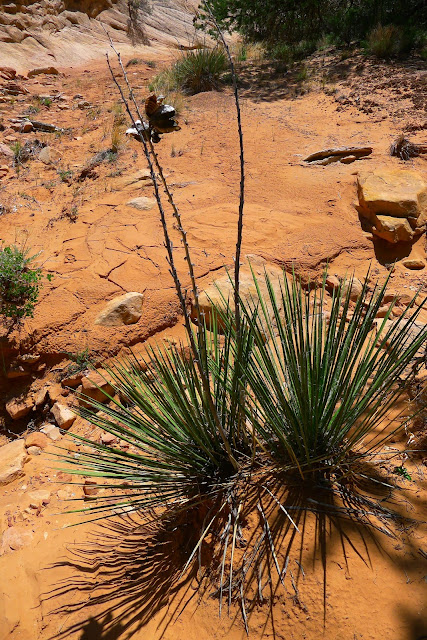 |
| Juniperus osteosperma |
Pinyon Pine is almost as prevalent and provided an important source of food (pine nuts) for the Ancient Puebloans.
Down in the canyon bottoms where there’s plenty of water, are the Cottonwood trees - perhaps the most pleasant of all, especially on a hot, sunny day when shade is at a premium.
Other common plant species I've seen are: Prickly Pear Cactus; Mountain Mahogany; Mormon Tea; Thin Leaf Yucca, Brittle Bush and Bursage.
 |
| Prickly Pear |
 |
| Thin Leaf Yucca |
Flowers are becoming more abundant as the season wears on. When I first arrived in mid-April I only found: Paintbrush; Wallflower and Phlox.
 |
| Desert Phlox |
But now as the days lengthen and warm, it’s common to find: Globemallow; Scarlet Penstemon; Claret Cup; Primrose and many others.
As far as critters go, I've seen mostly lizards and grasshoppers on the trails...with the occasional gopher snake.
 |
| Canyon Wren |
All of these played a very important role in the ancient peoples’ lives. They provided not only food but construction materials, dyes for clothing and pottery, medicinal remedies and more.









No comments:
Post a Comment